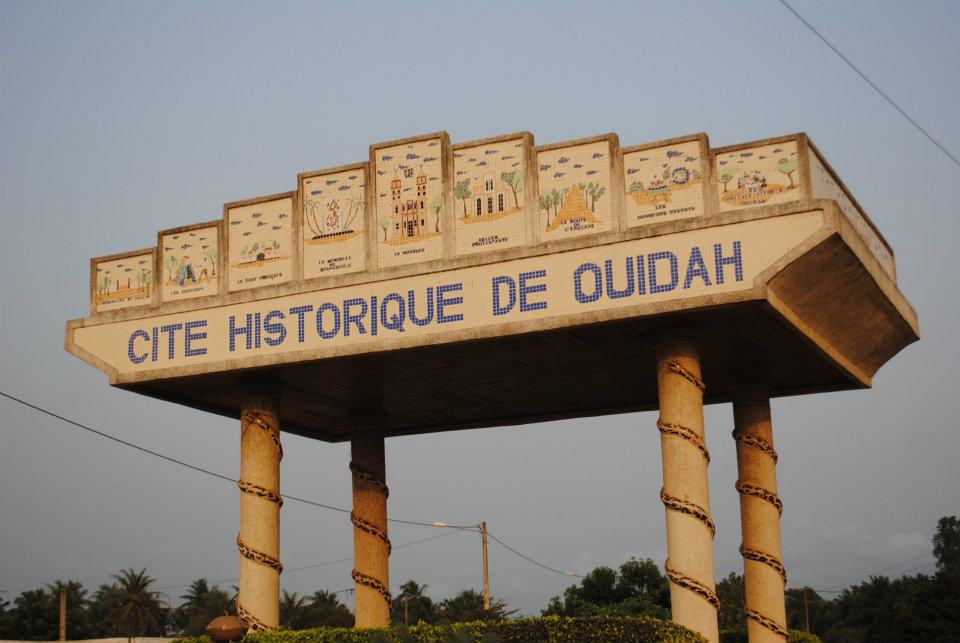
OUIDAH
Ouidah is known for the leading role she played in the slave trade during the seventeenth, eighteenth and nineteenth centuries, when nearly a million people were embarked on ships and, from the beach of Ouidah, transported through Atlantic. Initially, however, Ouidah (formerly Gléwé) was only a small village in a small kingdom of Xwéda, which managed to provide for the needs of its inhabitants through agriculture, hunting and fishing in the lagoons Coastal – far from the dangers of the sea and the tides.
The first meeting between Ouidah and the Europeans took place during the sixteenth century. Although the slave trade along the Bay of Benin began soon after, it was not until the end of the 17th century that European merchants began to buy slaves in the kingdom of Xweda on a large scale, by establishing forts. and counters in the city of Gléwé. This commerce ensured the prosperity of the kingdom until the moment of its military invasion, in 1727, by the kingdom of Dahomey: its citizens were killed, captured and dispersed and the trade with the Europeans passed to the hands of the Dahomeans.
The city of Ouidah remained under the control of the Dahomees until the colonization of the latter by France. The slave trade was extremely intense: by the mid-eighteenth century the population of Ouidah reached the number of 10,000 inhabitants while the economy was at its peak. The year 1818 saw the installation of Francisco Felix de Souza, known by the Dahomeans under the name of Chacha, head, in the name of the kingdom, the slave enterprise. His descendants retain until today an important position in the society of Ouidah.
To the extent that European governments denounced the slave trade as brutal and unjustifiable, slave trade across the Atlantic began to decline. In the late nineteenth century the city of Ouidah began to focus its economic activity on the export, much less lucrative, palm oil. Even as the slave trade was in decline, the repatriation of descendants of slaves exported to the New World began. They were, for the most part, a third generation of slavery in Brazil. Back in Benin (and especially in Ouidah), they brought a lot of their customs and traditions. Even today, several examples of Afro-Brazilian architecture bear witness to this period.
The kingdom of Dahomey (including Ouidah) was colonized by the French in 1902; in 1960, however, he obtained independence
Ouidah is the most important center of voodoo religion in Benin and probably in the world. In 1992, the city hosted the first world festival devoted to Voodoo art and culture. In addition, the day of the annual Voodoo festival in Ouidah, January 10, was declared a national holiday.